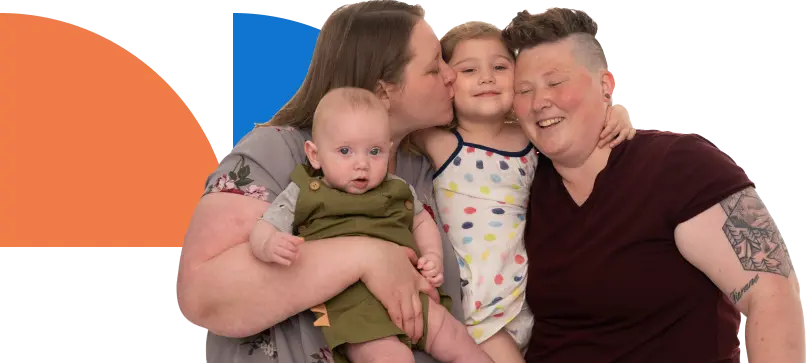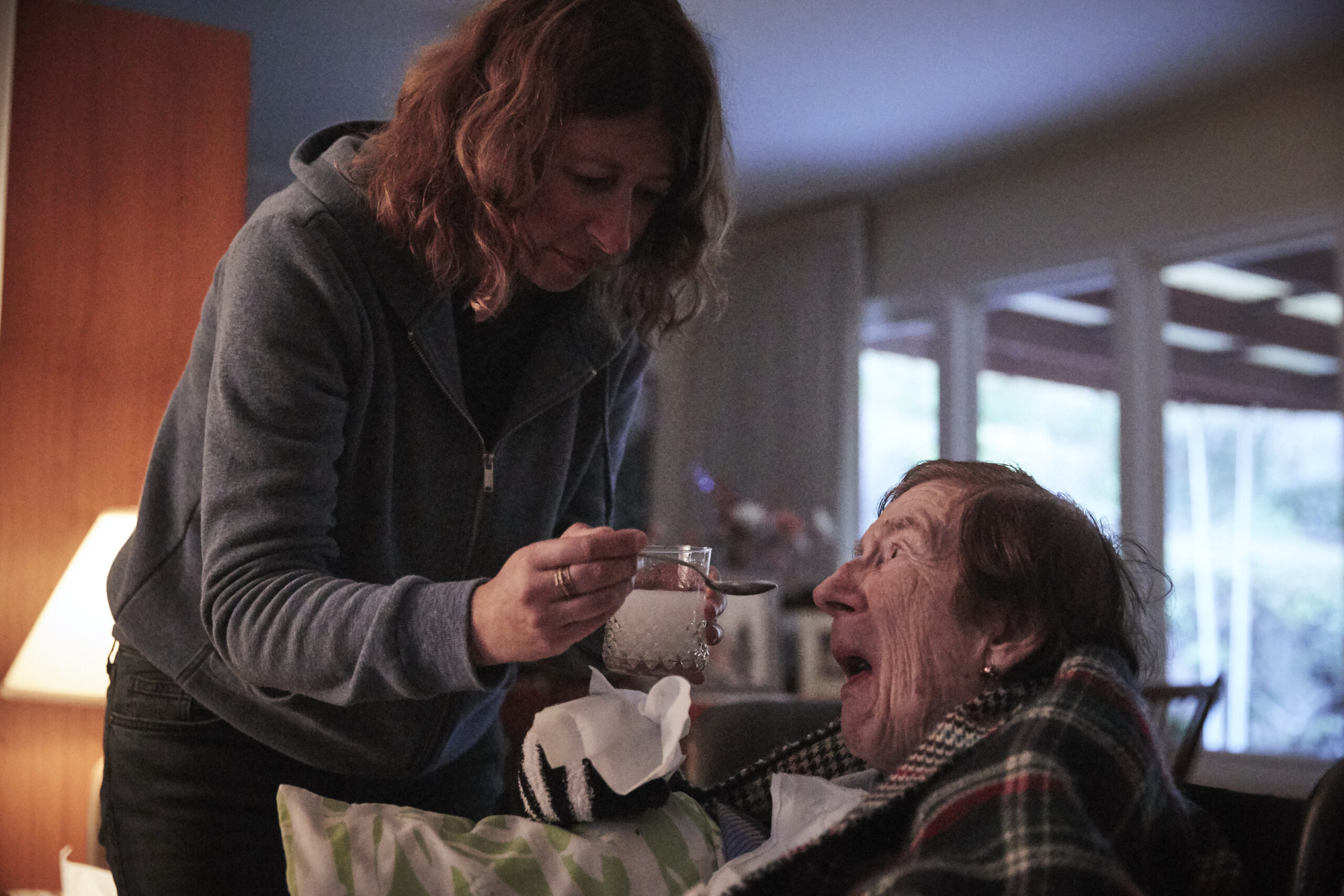

By Vicki Shabo, Better Life Lab at New America and Lydia Storie, Caring Across Generations
Care is everywhere in our lives, yet it is greatly underrepresented on TV.
That’s the headline of a recent report from the Geena Davis Institute and Caring Across Generations. The study found that, in 2021, just 10% of TV shows featured care-related storylines; that few depict the care of older adults, or give older or disabled people agency; and that most default to women as primary caregivers, especially for older adults and disabled children.
We know the images, characters, and stories people see on screen can be transformational, and that’s why we salute creatives working to include care experiences in their stories. Doing so can normalize care, depict shared experiences so caregivers and care recipients feel less alone, and help viewers envision solutions to caregiving challenges.
We have been working hard with creatives to seed more care storylines on television and to help resource writers with the context, facts, and data they need to tell authentic stories that reflect the full spectrum of emotions and experiences related to care. Building on our list of ten notable moments of care in TV last year, here’s our round up for this year:
These ten examples include people from a range of backgrounds, abilities and walks of life caring for one another, receiving care themselves, managing work and caregiving or illness, and navigating life’s challenges.
We celebrate them not just for their depictions of care, but also for the relatable context they provide and their willingness to break taboos, disrupt gender stereotypes and reframe ageist and ableist tropes, without sacrificing entertainment value.
 1. A Million Little Things (ABC)
1. A Million Little Things (ABC)
The final season of this ensemble drama featured a range of care storylines, continuing the show’s rich history of depicting a community of friends caring for one another over the series’ five seasons. Of note, Rome and his wife Regina recognized that Rome’s father, Walter, had progressive dementia and required more care. The show depicted job interviews with professional, paid caregivers; Walter’s growing care needs interrupting Rome’s work; and Walter moving temporarily into Rome and Regina’s home. Another storyline featured a pregnant character, Maggie, who modeled a conversation with her boss about maternity leave and, after giving birth to her son with her partner Gary, referenced the high costs of child care, . Maggie’s storyline also included a community care moment when all of her friends supported her, Gary, and their baby as Gary battled cancer through chemotherapy and then ultimately moved to hospice.
2. The Bear (Hulu)
This breakout show quietly contributed to the growing stable of male caregiver characters on TV, with aspiring pastry chef Marcus also serving as primary caregiver to his terminally ill mother. In Season 2, Episode 4, Marcus expressed feeling conflicted about leaving her in order to take advantage of an opportunity to study under an esteemed chef in Copenhagen. Strong feelings of guilt when care responsibilities and personal aspirations collide is a familiar theme for family caregivers, and The Bear handled it with nuance and grace.
3. Fire Country (CBS)
The first season of this action series included a significant character receiving a diagnosis of potentially fatal kidney disease. At first, CalFire Division Chief Sharon hid her illness as the reason she needed time away from work out of fear about others coming for her job, or people thinking less of her for being sick. Ultimately Sharon came to terms with her diagnosis and the community rallied to try to help her. She returned to work while awaiting a kidney transplant and, in Episode 16, managed a crisis while also managing her illness, demonstrating that illness and disability need not be a barrier to important, respected work. We also love that, earlier, in Episode 6, Vince, Sharon’s husband, called himself her “designated care person,” and insisted on taking a sick day to care for her. This is another great example of a man flexing his care muscles on screen.
 4. First Wives Club (BET+)
4. First Wives Club (BET+)
Another example of a father struggling to balance work and care showed up in Season 3, Episode 9 of this comedy series. Married working parents Gary and Bree often relied on Gary’s cousin Pam to help watch their two kids, but in this instance, he forgot Pam would be out of town on a girl’s trip to get a well-deserved respite from providing round–the-clock childcare. With both Pam and his wife Bree away, Gary was left with no choice but to bring their children with him to the office. He quickly learned that working while caring isn’t so simple and his coworkers were less than understanding about his choice to participate in an unofficial “bring your kids to work day.” This show is a great example of how managing work and care can be challenging but ripe for comedic moments, and models how care circles can help provide relief for stressed caregivers.
 5. The Last of Us (HBO)
5. The Last of Us (HBO)
Episode 3 of this post-apocalyptic limited series surprised us with a rare example of aging care within the context of a queer romantic relationship between Frank and Bill. This representation is significant given that the aforementioned research study by Caring Across Generations and the Geena Davis Institute found that very few caregivers on TV in 2021 were identified as queer, including less than 1% of male-identified caregiver characters. In reality, members of the LGBTQ community are much more likely to rely on their chosen family and community for care later in life, and are more likely to experience systemic barriers to providing or receiving care. Depictions like this show us that care is a part of life that transcends our demographics, but they’re also essential to normalizing the unique experiences across different communities.
 6. Lessons in Chemistry (Apple)
6. Lessons in Chemistry (Apple)
This limited period drama explored the challenges of early parenthood, the support that parents can offer to one another, and the trade-offs that work and parenting can require. Set in the 1950s, it featured Elizabeth, an introverted white woman simultaneously reeling from losing her job, the sudden death of her partner, and an unplanned pregnancy. Elizabeth reluctantly turned to her neighbor Harriet, a Black woman and mother of two young children, whose husband was a deployed military doctor for help. The two women ultimately grew to be close friends and supported one another through parenting challenges, navigating work and child care, and Harriet’s mission to remedy a community racial injustice. The show also depicted a single father – unusual for the time – who became both Elizabeth’s work colleague and her friend as Elizabeth used her very public television platform as the star of a cooking show to advance women’s rights and civil rights.
 7. Queen Charlotte (Netflix)
7. Queen Charlotte (Netflix)
One of Netflix’s top five most streamed series in the first half of 2023, this historical fiction limited series put care at the center of a romantic storyline. Young King George distanced himself from his new wife, Queen Charlotte, in part to hide his mental health disability. But once Charlotte learned about his condition, she positioned herself as his fiercest advocate and partner in his care, ultimately supporting George’s wishes for how he lived. It was powerful to see care as a galvanizing force for love rather than framed as a disruption to, or “burden,” on a relationship. Notably, the show also grappled with the stigma attached to mental health disability, especially in the context of being able to perform one’s job, which also spurs people to hide the care they need.
 8. Shrinking (Apple)
8. Shrinking (Apple)
In a subtle but radical move, this half-hour dramedy introduced the fact that Harrison Ford’s character Paul had Parkinson’s disease with an almost offhand comment by his colleague Gaby. It’s not a shocking reveal or culmination of an arc; it just is. When Paul raised his need for accommodations, he wasn’t on the cusp of losing his livelihood – he simply needed a ride to and from work. He had agency over his diagnosis and care, but he also realistically grappled with how to have tough conversations with family. This storyline was all about the nuances, but the way it reframed care and aging is profound.
 9. Summer I Turned Pretty (Amazon)
9. Summer I Turned Pretty (Amazon)
This young adult drama, which centers on friendship and romance, depicted people forming a circle of care around Susannah, the mother of two boys, as she was dying of cancer. Especially notable was Season 2, Episode 5, where Jeremiah, a high school senior, cared for his mom by preparing food for her, ensuring she stayed hydrated, keeping her company, and performing household tasks such as paying bills. The depiction of a boy providing care is a welcome departure from most television shows, where women are more often shown to be the hands-on nurturers and caregivers.
 10. Virgin River (Netflix)
10. Virgin River (Netflix)
Relationships of all kinds are at the heart of this Netflix romantic drama. Season 5, Episode 1 opened with a heartbreaking goodbye between Preacher, the chef at Jack’s Bar, and Christopher, the boy he cared for throughout much of Seasons 3 and 4. Not only did this storyline offer a positive example of a Black male caregiver, it also realistically grappled with Preacher having to manage work and other obligations with Christopher’s care. Season 5 also showed a paid caregiver, Lizzy, working with the town’s mayor Hope, an older adult, as she navigated the lasting effects of a traumatic brain injury. Needing care did not diminish Hope’s agency, especially as she remained a vibrant and literal savior of her community when a forest fire threatened the town.
Honorable Mentions: We’re thrilled to see certain shows we highlighted last year, including Grey’s Anatomy and Station 19, continue to make care more visible – alongside other examples, such as P-Valley (Clifford caring for his grandmother), Primo (five uncles all sharing in the care of their nephew, Rafa), The Diplomat (for acknowledging that people who leave work to provide care to loved ones are contenders for re-entering the public arena), and Rap Shit (for showing a dad step up to provide more child care), and more.
LYDIA STORIE is the Director of Culture Change for Caring Across Generations, leading the organization’s engagement work with the entertainment industry. Prior to joining Caring Across, Lydia spent over a decade as a creative executive and producer in film and TV.
VICKI SHABO is a senior fellow at New America’s Better Life Lab, and launched the Lab’s entertainment-focused narrative and culture change practice in 2022. She is also a policy expert, advocate and strategist on issues related to workplace gender equity and care.
 1. A Million Little Things (ABC)
1. A Million Little Things (ABC)

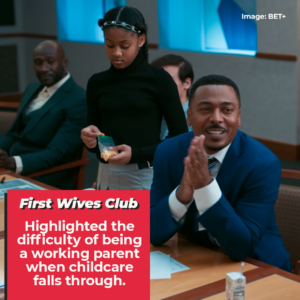 4. First Wives Club (BET+)
4. First Wives Club (BET+) 5. The Last of Us (HBO)
5. The Last of Us (HBO) 6. Lessons in Chemistry (Apple)
6. Lessons in Chemistry (Apple)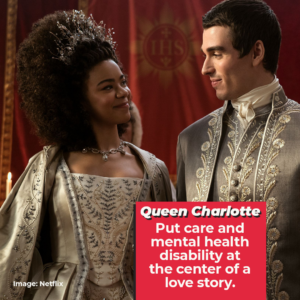 7. Queen Charlotte (Netflix)
7. Queen Charlotte (Netflix)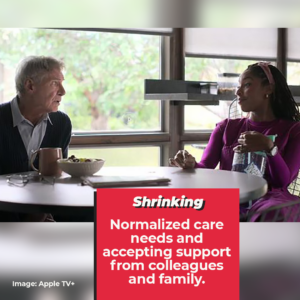 8. Shrinking (Apple)
8. Shrinking (Apple) 9. Summer I Turned Pretty (Amazon)
9. Summer I Turned Pretty (Amazon)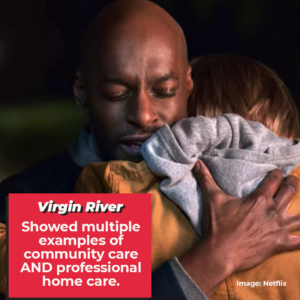 10. Virgin River (Netflix)
10. Virgin River (Netflix)